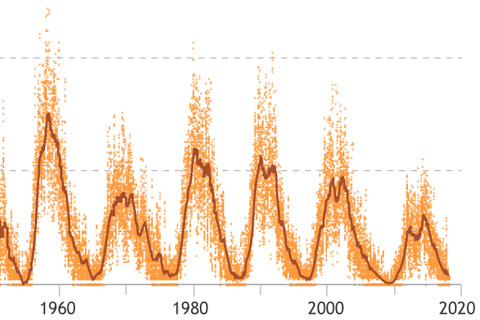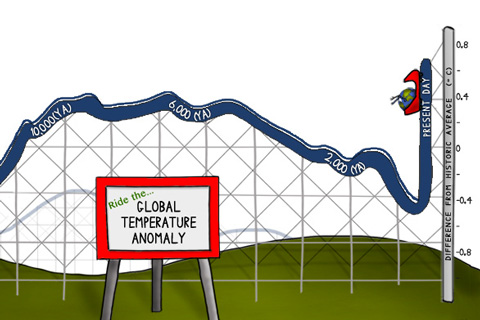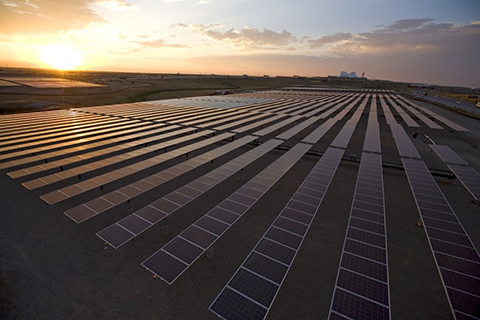
Observations of sunspots and other indicators of solar activity indicate no changes that could have caused global warming over the past half century.

Observations of sunspots and other indicators of solar activity indicate no changes that could have caused global warming over the past half century.

Earth has warmed in the past due to changes in the Sun, volcanic eruptions, and naturally occurring increases in greenhouse gases. Our ability to understand and explain past changes is one reason we are confident that recent changes are due to humans.

Today's global warming is happening at a much faster rate today than it did in the warm periods between ice ages over the last million years.

Alaska's natural monuments are of such gargantuan scale that the environment can seem immutable. But a new report from NOAA's Alaska RISA team documents profound changes the state has experienced in just the past five years.

NOAA is an agency that enriches life through science. From the surface of the sun to the bottom of the ocean, NOAA advances scientific understanding of Earth's environment, climate, and weather.
Societies, governments, and individuals can take steps to reduce risks and vulnerabilities to shifting climate and weather events in their homes, communities, and businesses.

There is great potential for the collective actions of many individuals worldwide to reduce global warming by making changes in their daily and annual activities that produce heat-trapping gases and aerosols.

Business leaders can evolve their business models to stay profitable while improving their energy efficiency, reducing their carbon emissions, and reducing their, and their climate-related risks.

While we cannot stop global warming overnight, or even over the next several decades, we can slow the rate and limit the amount of global warming by reducing human emissions of heat-trapping gases and soot.

Weather and climate occur on different scales of time and space, and depend on different aspects of Earth's environment. Weather describes atmospheric conditions at a particular time and place. Climate is the overall statistical characteristics of weather and environmental conditions, such as long-term averages and ranges of variability, for a given place and season.